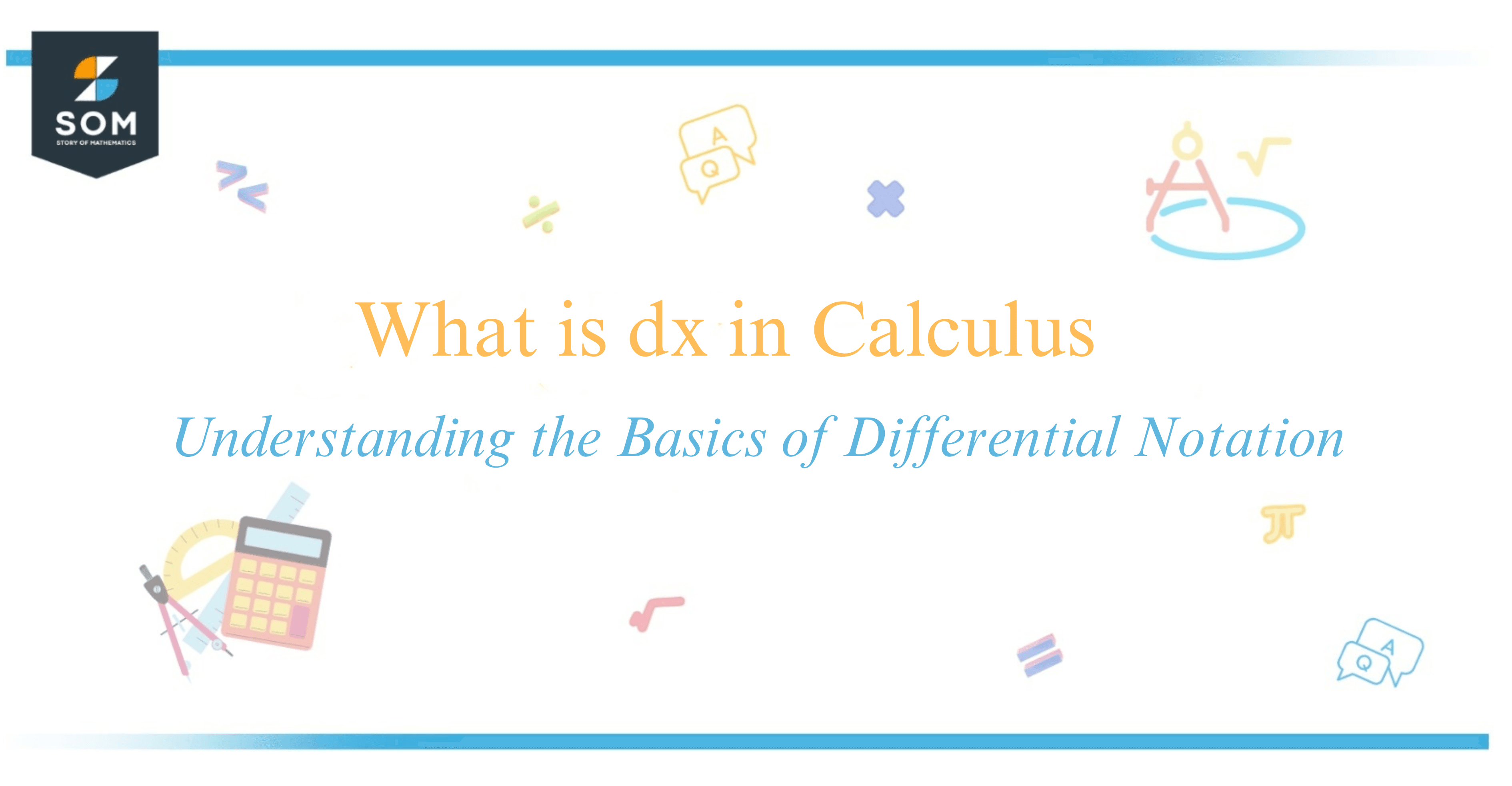
In the world of calculus, “$dx$” is a symbol that represents an infinitesimally small change in the variable $x$. When we look at functions and their graphs, we consider $dx$ as a tiny nudge along the $x$-axis, used to approximate the rate of change and the area under curves.
Calculus hinges on the concepts of differentiation and integration, and in both realms, $dx$ plays a crucial role. During differentiation, it appears in the denominator, reminding us that we are considering the limit as $dx$ approaches zero.
In integration, it is often seen next to an integral sign, indicating the variable with respect to which we are summing up an infinitesimally small product to find the total accumulation of area.

My knowledge of calculus expands upon this fundamental notation, acknowledging that it isn’t just a mathematical triviality but the backbone of many advanced concepts in mathematics.
As we explore the applications of $dx$ in calculus, we not only deepen our understanding of mathematical theory but also unlock a world where the tiniest changes can have significant impacts. Ready to take a closer look at how an almost negligible quantity can make such a difference?
Understanding dx in Calculus
In calculus, dx represents something quite fundamental; it’s an infinitesimal unit of change. When I’m dealing with functions, dx plays a crucial role in the concept of derivatives and integrals, marking the variable of interest with respect to which we are differentiating or integrating.
It’s part of the Leibniz notation, named after Gottfried Wilhelm Leibniz, who helped to develop calculus alongside Isaac Newton. The expression dx is derived from the Latin word “differentia,” and it symbolizes an infinitely small increment or change in the variable x.
So when I work with a function $f(x)$, I use the notation $\frac{df}{dx}$ to indicate its derivative—the rate at which $f(x)$ changes with respect to $x$. This ratio can be understood as the limit of the average rate of change of the function as the change in x approaches zero:
$$\frac{df}{dx} = \lim_{\Delta x \to 0} \frac{f(x + \Delta x) – f(x)}{\Delta x}$$
The infinitesimal view of dx can be described using the concept of infinitesimals. These are quantities so small that they’re effectively zero but still retain certain properties of number. So while not literally “zero,” they allow us to work with a practical concept of “infinitely small.”
Using Leibniz notation, the differential form of a function, often represented as df, provides a way to talk about a function’s output change due to a small change in input, dx.
For instance, in an integral the notation $\int f(x) , dx$ implies summing (integrating) the values of $f(x)$ over all infinitesimal increments dx. This idea is foundational to integral calculus, where the integral sign (∫) denotes the accumulation of values according to the function over the specified range.
By understanding dx as a symbol for infinitesimal change, we grasp the essence of continuous change in calculus, which is at the heart of how we model and solve problems involving growth, motion, and fluctuation.
Applications and Implications of dx
In the realm of calculus, the term dx represents a fundamental concept with significant applications. I’ll explore how dx applies to various aspects of calculus and what implications it holds for mathematical analysis.
Definite Integrals: In evaluating definite integrals, dx denotes the variable of integration, indicating the axis along which the integration occurs. For example, in the integral $\int_{a}^{b} f(x) , dx$, dx signifies that my integration is with respect to x over the interval from a to b.
The solution here represents the area under the curve of the function f(x), a crucial application in determining quantities such as volume and work.
Continuous Functions: dx is essential when dealing with continuous functions. It allows for the approximation of areas and volumes in a smooth, precise manner, reducing error. When functions are continuous, the sums involving dx converge to the true values of the quantities I am interested in.
Total Differential and Partial Derivatives: In multivariable calculus, dx appears in expressions for total differentials, which involve partial derivatives. If I have a function z that depends on two variables, x and y, its total differential is expressed as $dz = \frac{\partial z}{\partial x}dx + \frac{\partial z}{\partial y}dy$.
This formula is a linchpin in my ability to estimate the error or change in output based on changes in input.
Differentiability and Continuity: The existence of dx is inextricably linked to the differentiability and continuity of a function. Only when a function is differentiable—at a point or over an interval—does the concept of dx hold meaning, for it relates to the infinitesimally small changes in the variable x that I am examining.
| Concept | Implication of dx |
|---|---|
| Definite Integral | Determines area under the curve |
| Continuous Functions | Ensures accurate approximation |
| Total Differential | Requires partial derivatives for change estimation |
| Differentiability & Continuity | Linked to the existence and meaning of dx |
Through these applications, dx proves itself as more than a notational convenience; it is a pivotal element in my understanding and utilization of calculus in describing and solvingreal-world problems.
Conclusion
In the journey through calculus, we’ve uncovered that the term dx represents an infinitesimally small change in the variable x. This concept is fundamental not only in the notation of derivatives, such as $\frac{dy}{dx}$, but also integral to the understanding of integrals.
While dx has no numerical value by itself, it’s critical in conveying the incremental approach that calculus embodies—approaching problems as a series of infinitesimally small steps to find precise solutions. In essence, dx symbolizes a limit process, the heart of calculus, where we investigate what happens as increments become vanishingly small.
We’ve learned that dx is a differential, which allows us to manipulate equations and functions in powerful ways, such as during u-substitution, where one replaces dx with another differential like du.
This shows that dx signifies much more than a simple notation; it is a tool that unlocks the potential to solve complex problems by breaking them down into manageable parts.
Reflecting on my learning experience, grasping the true meaning of dx was a turning point in my mathematical journey. It transitioned from a symbol on a page to an intuitive representation of calculus concepts. I hope you, too, will find the exploration of dx and its applications as enlightening as I did in this invigorating field of mathematics.
